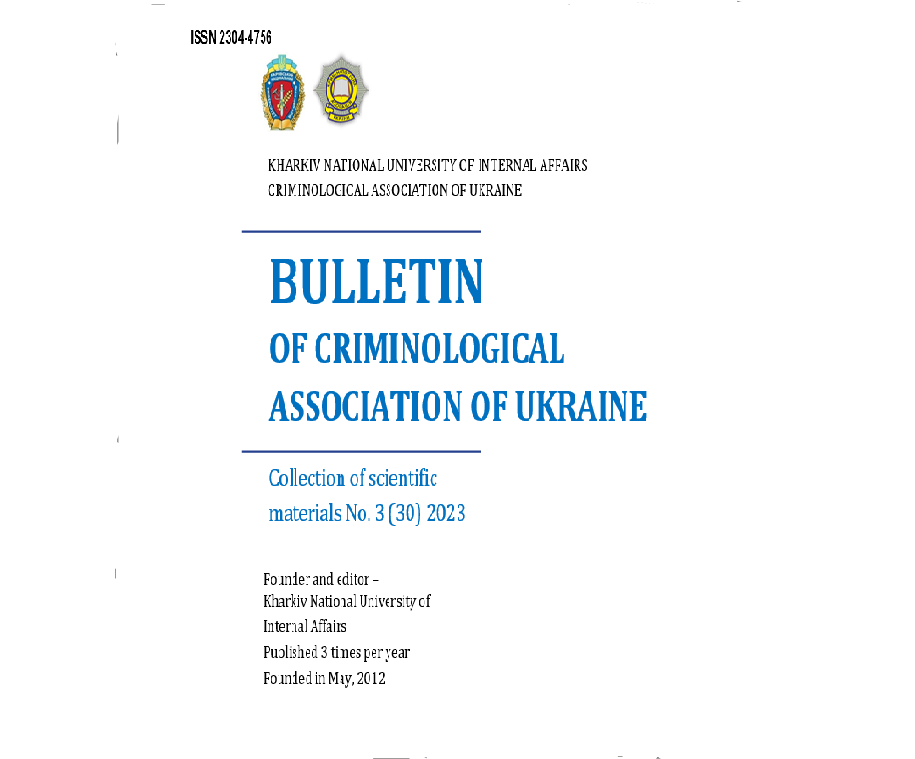СКЛАД ПОКАРАННЯ: КОНЦЕПТ, СТРУКТУРА, ЗМІСТ
DOI:
https://doi.org/10.32631/vca.2023.3.06Ключові слова:
покарання, склад покарання, засуджений, виконання, відбування, виправлення, ресоціалізація, запобігання, кримінальне правопорушення, злочинністьАнотація
Стаття присвячена концептуалізації складу покарання. У вузькому значення під складом покарання запропоновано розуміти систему об’єктивних і суб’єктивних ознак державного впливу на особу засудженого, які визначають його як покарання. У широкому значенні – це аналітичний конструкт, що виражає об’єктивну та суб’єктивну спрямованість, зміст, засоби та процес виконання і відбування покарання. Склад покарання включає чотири елементи: об’єкт і об’єктивну сторону, суб’єкт і суб’єктивну сторону. Об’єкт є триплановим. Перший його план представлено особистістю засудженого. Другий – компонентами середовища та ситуації вчинення кримінального правопорушення. Третій план – особистість потерпілого (за наявності).
В результаті під покаранням запропоновано розуміти захід правового впливу, що реалізується від імені держави за вироком суду щодо особи, визнаної винною у вчиненні кримінального правопорушення, шляхом передбачених законом обмежень прав і свобод засудженого, а також щодо інших осіб через демонстрацію та/або поширення інформації про кримінально-виконавчу практику. Покарання має на меті кару, а також сприяння запобіганню вчиненню засудженим нових кримінальних правопорушень.
Завантажити
Завантаження
Опубліковано
Номер
Розділ
Ліцензія
Авторське право (c) 2024 Ю.В. ОРЛОВ

Ця робота ліцензується відповідно до ліцензії Creative Commons Attribution 4.0 International License.

